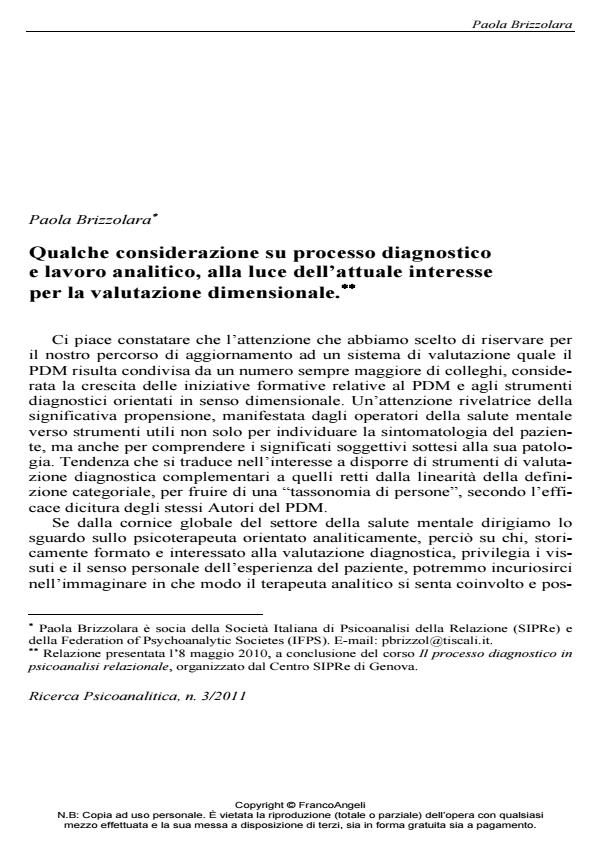A few remarks on diagnostic and analytic processes in the light of the current interest for dimensional assessment
Journal title RICERCA PSICOANALITICA
Author/s Paola Brizzolara
Publishing Year 2011 Issue 2011/3
Language Italian Pages 9 P. 33-41 File size 659 KB
DOI 10.3280/RPR2011-003003
DOI is like a bar code for intellectual property: to have more infomation
click here
Below, you can see the article first page
If you want to buy this article in PDF format, you can do it, following the instructions to buy download credits

FrancoAngeli is member of Publishers International Linking Association, Inc (PILA), a not-for-profit association which run the CrossRef service enabling links to and from online scholarly content.
The tools meant for logical diagnosis (dimensional view), such as PDM, direct diagnostic reasoning not only to accepting the patients’ individual features. By resorting to an epistemological structure fed by the logic of Complexity and constructivism, they promote the recognition of the analyst/patient dyad as the vantage point for diagnostics. In this sense, diagnosis itself represents an opportunity for expanding and enhancing the conceptualization of the analyst’s role, and for reflecting on how to use the data emerging from assessments in the clinical setting. More specifically, the presentation of a clinical situation allows to highlight the importance of a clinical assessment that is open to being amended during treatment, in order to leverage any new possibilities being offered by the analytic field as we speak, as well as to understand and use the implicit manoeuvres patients deploy in the therapeutic relationship, in search of expanding their subjectivity.
Keywords: PDM, dimensional diagnosis, psychoanalysis, subjectivity, intersubjectivity, theory of complexity, constructivism
Paola Brizzolara, Qualche considerazione su processo diagnostico e lavoro analitico, alla luce dell’attuale interesse per la valutazione dimensionale in "RICERCA PSICOANALITICA" 3/2011, pp 33-41, DOI: 10.3280/RPR2011-003003